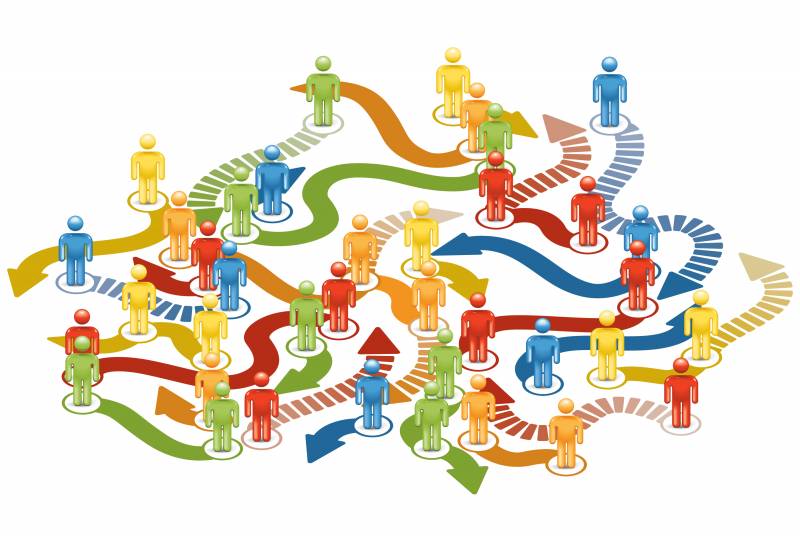Compliance in the medical and pharmaceutical sectors according to IAPCO

Compliance - a word that makes professionals in the world of medical meetings cringe these days. The relationship between medical associations and pharmaceutical companies has never been more complicated.
For quite some time, it seemed that it was easier for an association or a congress with the right following to get money out of companies than it was to steal candy from a kid. In many cases these relationships were uneven and the associations clearly in a position of power - just like many of their members themselves. First class tickets, boutique meetings in resort destinations and lavish hospitality were the tip of the iceberg and unfortunately a much better headline than the millions of dollars that went towards education, research and development.
To illustrate the point a bit better - the relationship should be seen as a pendulum and for a long time it swung further and further into one direction, until it basically catapulted itself onto the other side - a result of tighter scrutiny, bad press and billions of dollars in fines. And this is where we find ourselves now: the other side of that pendulum.
What to do
So what to do now? Many still believe that sooner or later the pendulum will swing back - not all the way where it used to be but basically manifest itself somewhere in the middle. This might be right and if we look back at the year 2015 in a decade, we might find ourselves wondering what all the panic was about. But, hoping for better days to come can’t be the way to deal with the problem at hand.
First of all, compliance in the medical and pharmaceutical sectors is complex; there is no easy solution or answer, in fact there isn’t only one answer. The truth is that there are so many answers to questions of “how” and “what” when it comes to the funding of medical congresses, that each case needs to be examined on its own.
Firstly, pharmaceutical compliance is primarily self-imposed by companies to regulate the market before the lawmakers were able to. As almost all companies were faced with the same challenge but actually came up with very different solutions, their representing bodies - like EFPIA - have tried to formulate an industry code. That itself is fantastic but in general not more than a guideline on compliance as the specific compliance guidelines can vary immensely among different EFPIA member companies.
In addition, the issue of cultural differences comes into play. What works well in North America might not work at all in Asia. Anybody working for or with an international association knows that compliance means something very different depending on what country/culture is concerned. Take the example of inviting physicians to attend an international medical conference; while North American doctors are already quite used to not having their way paid by a pharmaceutical company, the Latin American or Asian doctor still counts on the support of a company to be able to attend. In fact, many of them rely on that support as wages in many of these countries are a fraction of what they are in North America or Europe, and universities and institutions have much less money to spend on sending doctors half way around the world to a conference.
We have grown accustomed to these differences - we have adapted to it. However, we seem to have a much harder time understanding the differences in how compliance issues are handled in different companies. The key to gaining some understanding in this area is constant dialogue. With one of our clients, we have started annual meetings with approximately 20 of their top sponsors. Each meeting is only 30 minutes long but includes a full update on their compliance guidelines and general feedback on our sponsorship prospectus. We found this to be extremely eye-opening as we could see significant changes in terms of compliance and its application within the same company from year to year, but also extremely helpful as we were able to address these changes early on. By keeping the lines of communication open, we were able to change our sponsorship offering along the way and to existing sponsorship contracts if a company’s guidelines changed. It is incredibly important to understand that when it comes to compliance in sponsorship and marketing, our sales reps at the companies sit in the same boat as us; we all wish it was easier but we have to make the best out of the hand we are dealt with.
New regulations
As if self-imposed regulation wasn’t enough, governments have imposed a string of new regulations when it comes to the funding of physician’s activities. One of the most significant changes was the “Physicians’ Sunshine Act” which was first passed in the United States but has quickly found copycats within the European Union. The “Sunshine Act” as it is commonly called is supposed to shed a light (hence the term “sunshine”) on what physicians receive as gifts and payments from pharmaceutical companies. Its purpose is to protect patients’ interest by assuring that physicians act in their best interest rather than on behalf of a pharmaceutical company that has paid them. In general, nobody will disagree with that, however, the detail to which the Sunshine Act goes and the practical implementation make it increasingly more difficult to obtain funding for educational activities such as medical conferences. It makes the sponsorship of physicians’ attendance at these conferences practically impossible (unless from certain countries with no such act in place), it makes it harder to identify areas of sponsorship and it basically prohibits any social activity within the conference program.
These changes make it increasingly difficult for associations to create an attractive and balanced program that not only delivers on education and science but also allows for attendees to network and share experiences. There is no way around these regulations - as meeting planners and association executives, all we can do is educate ourselves for every conference we hold again. Regulations differ from country to country, company to company (as well as company location) and year to year. It is up to us to keep the lines of communication open and active with our key sponsors in order to get the best possible benefit for our conference and delegates - which in turn will create the best benefit for our sponsors.
When asked about the biggest change that I have encountered in the last few years when it comes to the participation of pharmaceutical companies in medical meetings, it is a shift to marketing that is based on delivering scientific value. Instead of sponsoring items like conference bags or even food and beverage events, pharmaceutical sponsors now prefer items that are educational or scientific such as a virtual meeting, an educational booklet or a satellite symposia. At recent conferences, there has been give-aways at Exhibit booths again - but this time they weren’t little gadgets like universal chargers or water bottles, now those are branded mini staging books or disease reference cards for doctors.
Not all bad
Not all changes that have come our way in the last few years are bad. Bringing some transparency and focus on education and science back to medical meetings is actually a good thing. However, it remains desirable that the attitude towards the funding of physicians to attend meetings as well as the general rejection of everything that includes a social element changes. Networking is important - anybody who has attended a meeting in their field will admit that many of the best takeaways come from the dinner conversations we had with likeminded people from our area of expertise - and the value of that hopefully will be discovered again.
Until then, the key to success when seeking pharmaceutical partnership for an association’s activities is: EDUCATE - educate yourself and your team about the latest changes in compliance regulations. COMMUNICATE - keep an open line of communication with your sponsors and corporate partners, and INNOVATE - be ready to change your approach to comply with all regulations and fit the needs of your stakeholders.
This article was provided by the International Association of Professional Congress Organisers, author Mathias Posch, Council Member of IAPCO, and President of ICS, International Conference Services, Vancouver, Canada. IAPCO represents today 120 professional organisers, meeting planners and managers of international and national congresses, conventions and special events from 41 countries. www.iapco.org
Other Articles
About Us
Supported by the Union of International Associations (UIA), the International Association of Professional Congress Organisers (IAPCO) and the Interel Group, the global public affairs and association management consultancy, Headquarters Magazines serve the needs of international associations organising worldwide congresses.















